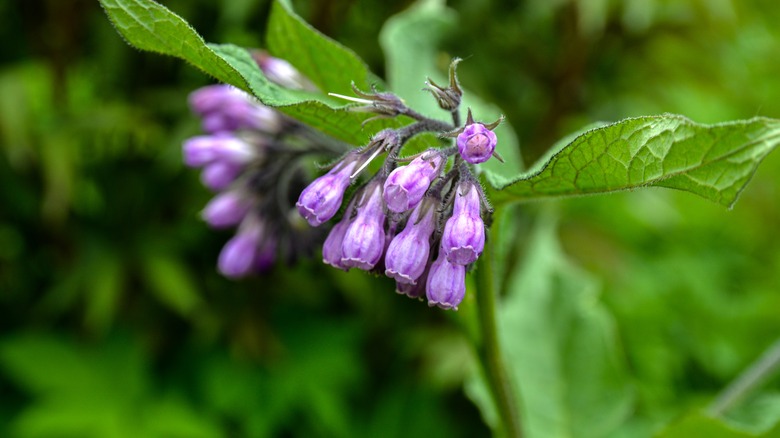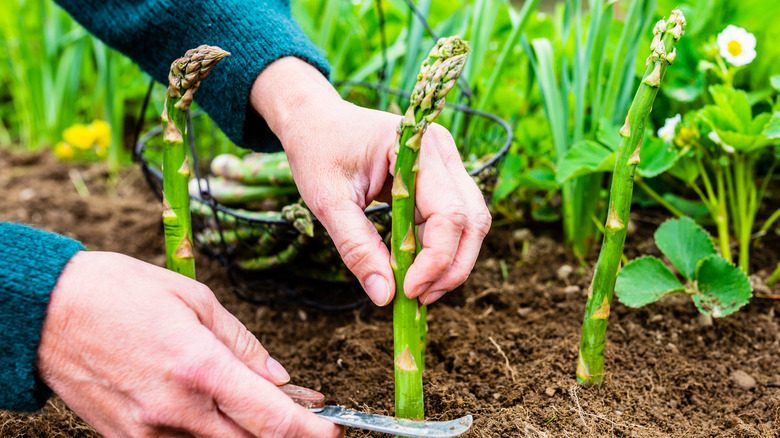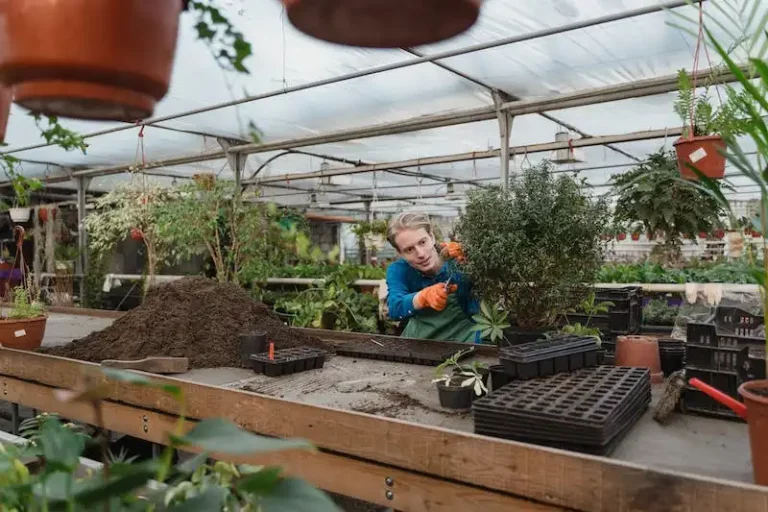More and more gardeners are appreciating the beauty and practicality of growing vegetables and flowers together. Not only does this create charming and thriving gardens full of pollinators and other beneficial insects, but it can even improve soil health in some cases. Asparagus and comfrey are an often overlooked combination that could be perfect for your space.
Asparagus (Asparagus officinalis), a perennial vegetable, can be harvested in mid to late spring in most areas, far earlier than many other garden staples. The delicious spears are actually the plant’s stems, and while they grow all summer, you should avoid harvesting them after the end of June so they can collect the energy necessary to return again the next year. These tall unharvested stems will develop soft whimsical leaves called ferns which can add beauty to your garden through the rest of the summer. Asparagus grows best in full sun and requires well-draining soil with a neutral pH.
Comfrey’s advantages and disadvantages

Comfrey (Symphytum officinale) is a bushy perennial herb in zones 4 through 8 and has drooping white, purple, or pink flowers. While the flowers are beautiful in their own right, comfrey is often grown more for its leaves, which are high in nitrogen and beneficial in compost making. Because comfrey is so fast growing and its leaves are a good source of nitrogen and minerals, growing comfrey just to cut it to add to compost is a popular permaculture practice.
Comfrey is considered invasive in the Eastern United States and can spread both from seeds and rhizomes, so it’s not necessarily the plant for every location. If you opt to try planting comfrey in your garden consider keeping it in a container or other contained space to limit its spread. While historically comfrey was used medicinally, that is no longer generally recommended as ingesting comfrey has been linked to liver damage.
Growing asparagus and comfrey together

Growing a container of colorful comfrey by your asparagus patch will provide flowers to complement the elegant asparagus ferns. Then, when your comfrey becomes too large, you can trim it back and add the chopped foliage to the asparagus bed to help nourish the soil. Comfrey is sometimes considered a “dynamic accumulator” for its ability to take up nutrients from the soil, so once those leaves decompose they should provide the asparagus bed with plenty of nitrogen and minerals. Just be sure no seeds or roots from the comfrey end up in your asparagus bed, or you may end up with comfrey plants where you didn’t expect them.
Comfrey, like asparagus, enjoys full sun, though it can also grow in part shade. Comfrey doesn’t grow taller than 3 feet, unlike asparagus, which can reach up to 6 feet tall. Your asparagus ferns could make a beautiful summer backdrop to your comfrey containers. Consider planting annual petunias alongside the asparagus as well, both for their beauty and their ability to repel asparagus beetles.



